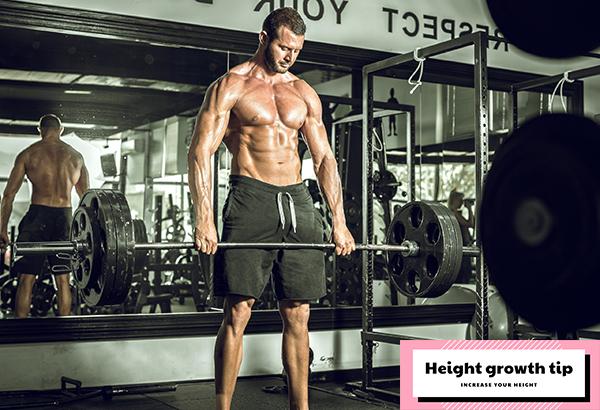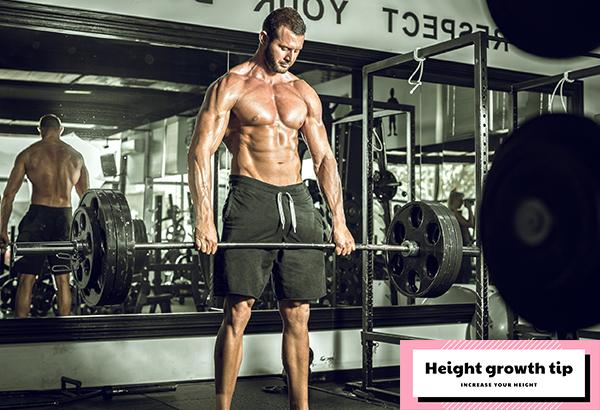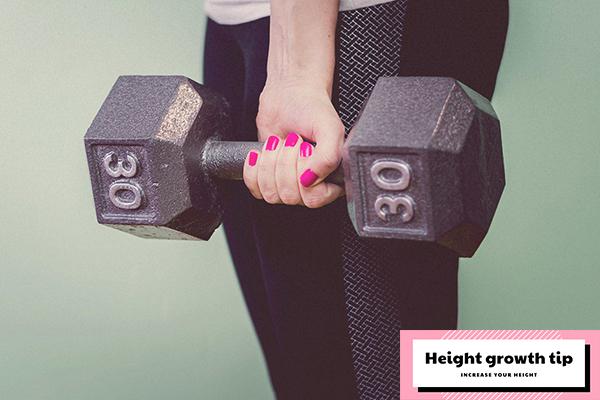Can Going to the Gym Affect Your Height?
Your potential height is primarily dictated by your genetic predisposition, with factors such as nutrition and environment playing supplementary roles.
Scientists offer reassurance that engaging in regular exercise does not appear to impede growth; rather, it contributes positively to the development of robust muscles and sturdy bones. Even as growth plates gradually solidify during adolescence, exercise plays a pivotal role in encouraging bone density and strength, especially among children. Consequently, youngsters need not harbor concerns about compromising their potential height due to exercise.
In the case of adults, while exercise does not directly induce bone growth, it does stimulate the release of growth hormones, which are responsible for promoting both bone and muscle growth.
The misapprehension that hitting the gym might inhibit one’s growth often arises from worries related to potential damage to growth plates. It is essential to emphasize that stunted growth is more likely to result from excessive weightlifting, inadequate supervision, and improper form, rather than mere participation in gym workouts.

What is the ideal age to commence sports training?
For young individuals aged 12 to 16, who find themselves amidst the transformative phase of growth spurts, it becomes imperative to exercise caution when embarking on rigorous sports training. At this juncture, their physical structures may not have fully matured to withstand strenuous workouts. Rather, it is advisable to concentrate on simpler exercises such as rope jumping, which can invigorate the production of growth hormones without endangering the integrity of their developing bones.
As the age of 17 dawns upon them, it generally becomes safe to escalate the intensity of their training routines. By this stage, their skeletal and muscular systems have acquired the robustness required to engage in weightlifting exercises. From a scientific standpoint, gym training can significantly contribute to one’s overall well-being, fortitude, and resilience against bone-related complications.
Therefore, upon reaching the age of 17, one can commence reaping the rewards of gym workouts, enhancing not only their physical appearance but also augmenting their comprehensive physical development.
Can Gym Workouts Truly Impact One’s Height?
Though exercise offers manifold benefits such as fostering growth, refining posture, enhancing flexibility, and fortifying core strength, it is paramount to acknowledge that specific gym regimens alone are unlikely to impart a substantial increase in height. Genetic factors predominantly dictate an individual’s height potential. However, certain exercises can aid in the holistic development of the body and create the illusion of a taller stature. Here are some beneficial exercises to consider:
- Treadmill Running: Running stands as an excellent means of muscle development and overall fitness. It can temporarily stimulate bone growth, which, in turn, might lead to a fleeting height boost attributed to spinal curvature. Running also aids in the production of essential growth hormones crucial for bone development. Commencing with a moderate pace and gradually intensifying it is advisable. A starting point of running for approximately 20 to 30 minutes, twice a day, proves to be beneficial.
- Squats: Consistent engagement in squats can fortify leg muscles and enhance core strength. By improving posture, squats can project the appearance of increased height. To execute squats correctly, position your feet flat on the floor, slightly wider than hip-width apart. Gradually bend your knees while maintaining weight on your heels and ensuring stable ankles. Maintain the squat posture for approximately 3 seconds before rising back to a standing position, utilizing your heels. Aim for 10 to 20 repetitions.
- Note: Pay meticulous attention to proper breathing, inhaling deeply during the squat and exhaling while returning to the starting position.
- Hanging Exercises: Hanging exercises hold the potential to alleviate spinal compression, bolstering better posture and potentially creating the impression of a taller stature. There are two primary methods for hanging exercises: a. Employing a Pull-Up Bar: Suspend yourself from a pull-up bar without any swinging motion. Strive for 10-15 sets of 15-20 seconds each, accumulating at least 30 minutes weekly. You may also incorporate gentle twists or leg lifts while hanging, always prioritizing safety. b. Utilizing an Inversion Table: Secure your ankles onto an inversion table and hang upside down. This method may prove more effective than a pull-up bar but might be less comfortable.
It is crucial to emphasize that while these exercises offer certain benefits, executing them with proper form and technique is paramount. Furthermore, focusing on comprehensive fitness, which includes maintaining a balanced diet, ensuring adequate sleep, and engaging in consistent physical activity, remains essential for optimal growth and development
Bench press:
The bench press exercise targets the pectoral muscles, triceps, and deltoids, which can help increase overall metabolism.
- Sit on a bench with your feet firmly planted on the ground.
- Lie on your back on the bench in a supine position.
- Place your hands on the barbell with a grip slightly wider than shoulder-width apart, and ensure a firm grip.
- Lift the weights off the rack and extend your arms straight out.
- Lower the weights down to your chest, then push them back up with your shoulders forward.
- Repeat the motion for the desired number of repetitions.
Squat jump:
The squat jump exercise engages the leg muscles and can help strengthen the spine.
- Stand with your feet flat on the floor, shoulder-width apart.
- Perform a regular squat by bending your knees, keeping your core engaged.
- Explosively jump upward, extending your legs fully.
- Land softly and go immediately into the next squat, ensuring that you are in a proper squat position upon landing.
- Complete 2 to 3 sets of 10 repetitions.
Essential Guidelines for Maximizing the Effectiveness of Your Gym Training:
Embarking on a journey to enhance your fitness through gym workouts involves a set of crucial considerations that, when adhered to, can elevate your exercise regimen to new heights. These pivotal tips serve as the foundation for a fruitful and fulfilling gym experience:
- Prioritize a Comprehensive Warm-Up: Before delving into your workout routine, it’s imperative to allocate ample time to a thorough warm-up. This not only prepares your body for the impending physical exertion but also minimizes the risk of injuries. A well-executed warm-up primes your muscles and joints, ensuring they are in optimal condition for the challenges ahead.
- Mindful of Spine Health: When engaging in weightlifting exercises, especially those of substantial intensity, be particularly cautious of the strain they may exert on your spine. This concern is particularly relevant in the morning when your body is at its tallest due to spinal decompression during sleep. To safeguard your spine, meticulous attention to form and technique is paramount.
- Avoid Overtraining and Listen to Your Body: Your body possesses a remarkable ability to communicate its needs. Pay heed to the signals it sends. Overtraining can lead to burnout and hinder progress. Prioritize adequate rest and recovery, as they are indispensable for muscle growth and repair.
- Nourishment Matters: The fuel you provide your body plays a pivotal role in your fitness journey. Maintain a well-balanced diet replete with essential nutrients such as protein, calcium, vitamins, and fiber. These elements not only bolster your overall health but also support your specific fitness objectives.
- Hydration is Key: Adequate hydration is a cornerstone of effective gym training. Drinking ample water not only keeps you refreshed but also enhances metabolism and provides the energy needed to power through your workouts.
- Emphasize Correct Posture: Proper form is the linchpin of safe and effective exercise. Prioritize maintaining correct posture during your workouts to reduce stress on your joints and ligaments. This approach not only safeguards against injuries but also ensures that your efforts yield the desired results.
In Summation:
Disregard the notion that gym workouts can stunt your growth. When approached with the right knowledge, proper form, and guidance, exercising can be incredibly beneficial. It is generally advisable to begin gym training around the age of 16 or older, when your skeletal and muscular systems have matured sufficiently to handle the demands of structured workouts.
However, in the realm of fitness and exercise, wisdom dictates seeking the expertise of certified fitness professionals or trainers. These experts can provide you with tailored techniques, personalized advice, and customized workout plans that align with your unique fitness aspirations and requirements. Their guidance ensures that your journey towards improved health and fitness is both safe and effective


